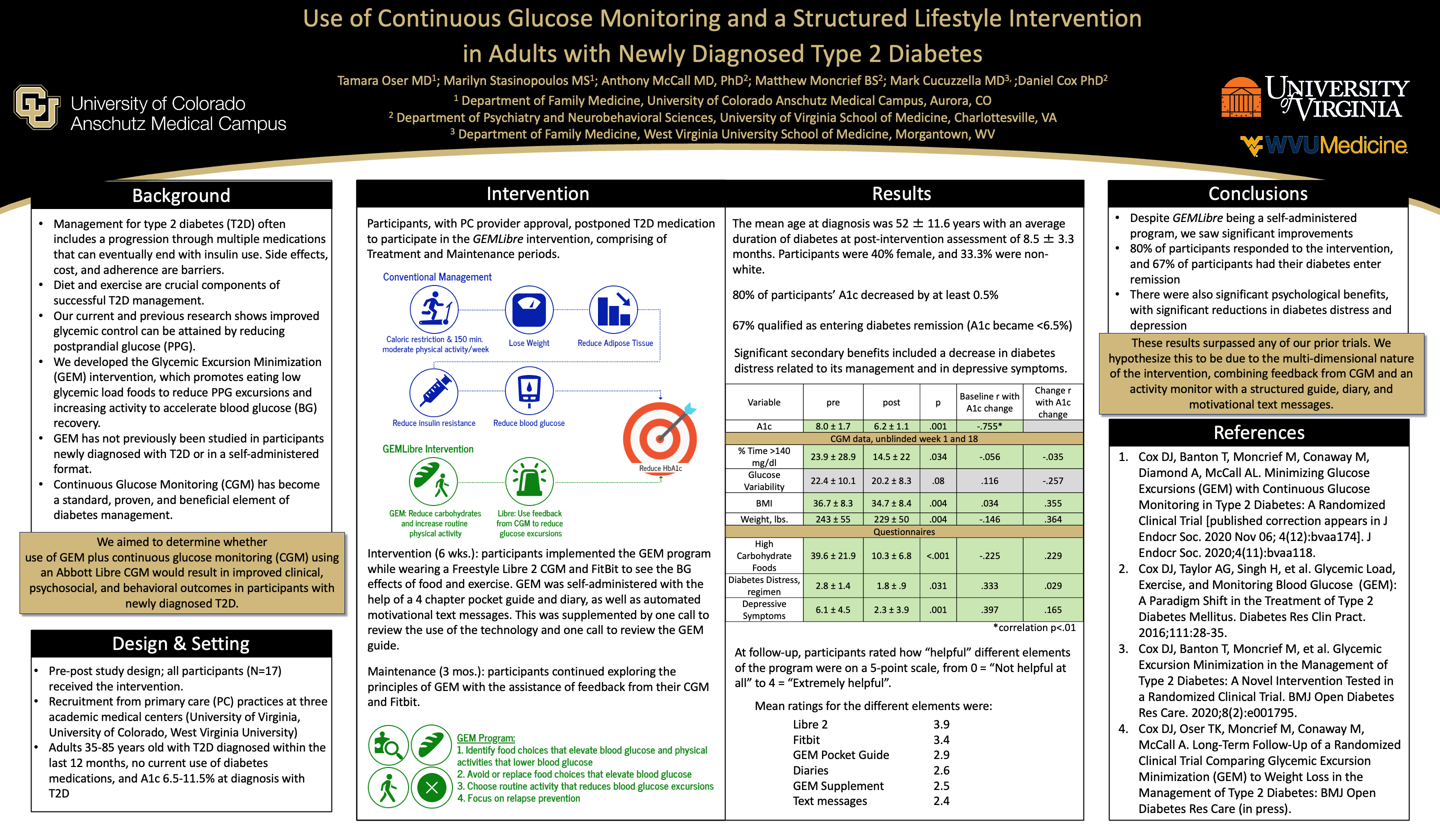PRP098: Use of Continuous Glucose Monitoring and a structured lifestyle intervention in adults with newly diagnosed type 2 diabetes
Tamara Oser, MD; Marilyn Stasinopoulos, BS, MS; Anthony McCall; Matthew Moncrief; Daniel Cox, PhD; Mark Cucuzzella
Abstract
Medication management for patients with type 2 diabetes (t2d) is often a progression through several medications that can eventually end in insulin therapy. Diet and exercise are crucial components of successful diabetes management. Our current and previous research indicates that improved glycemic control can also be achieved by reducing postprandial glucose (PPG). We developed the Glycemic Excursion Minimization (GEM) intervention, which promotes eating low glycemic load foods to reduce after-meal blood glucose (BG) excursions and increasing routine physical activity to hasten BG recovery. Objectives: To determine if individuals newly diagnosed with t2d can use GEM, combined with continuous glucose monitoring (CGM) to illustrate the personal impact of behavior change, to improve metabolic control, reduce reliance on diabetes medications, and improve psychological functioning. Study Design: Non-randomized control study; all participants receive the intervention. Matched controls undergoing routine care will be selected from patient records. Setting: Patients were recruited from primary care practices at three academic medical centers (University of Virginia, University of Colorado, West Virginia University). Population studied: Adults, aged 35 to 85 years, diagnosed with type 2 diabetes within the past 12 months, on no diabetes medications, and with an A1c between 6.5 and 11.5%. Intervention: Participants, with their doctors’ approval, will postpone medication management in order to participate in the GEMLibre treatment, consisting of a 6-week treatment period followed by a 3-month maintenance period. During the treatment period, they will implement the GEM program and wear a Libre 2 CGM and FitBit to provide them with feedback about effects of food and exercise choices. During the maintenance period, participants will continue the GEM lifestyle by referring back to the GEM guidebook as needed and wearing the Libre 2 CGM and FitBit to provide BG and activity feedback. Outcome Measures: Primary outcome is Total Treatment Effect, which incorporates change in A1c and diabetes medication. Secondary outcomes include psychosocial measures to assess dietary habits, depression, diabetes knowledge, empowerment, diabetes concerns, treatment optimization, and program importance. Expected Results: We hypothesize that GEM, in combination with the Libre2 CGM, will normalize BG and diminish the need for diabetes medication.

Larry Green
11/21/2021That remissions rate is amazing!